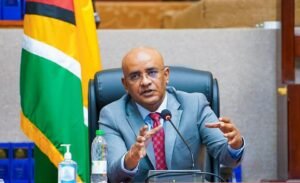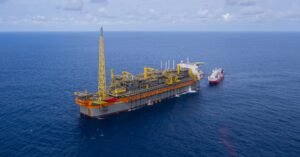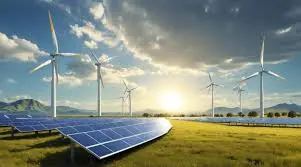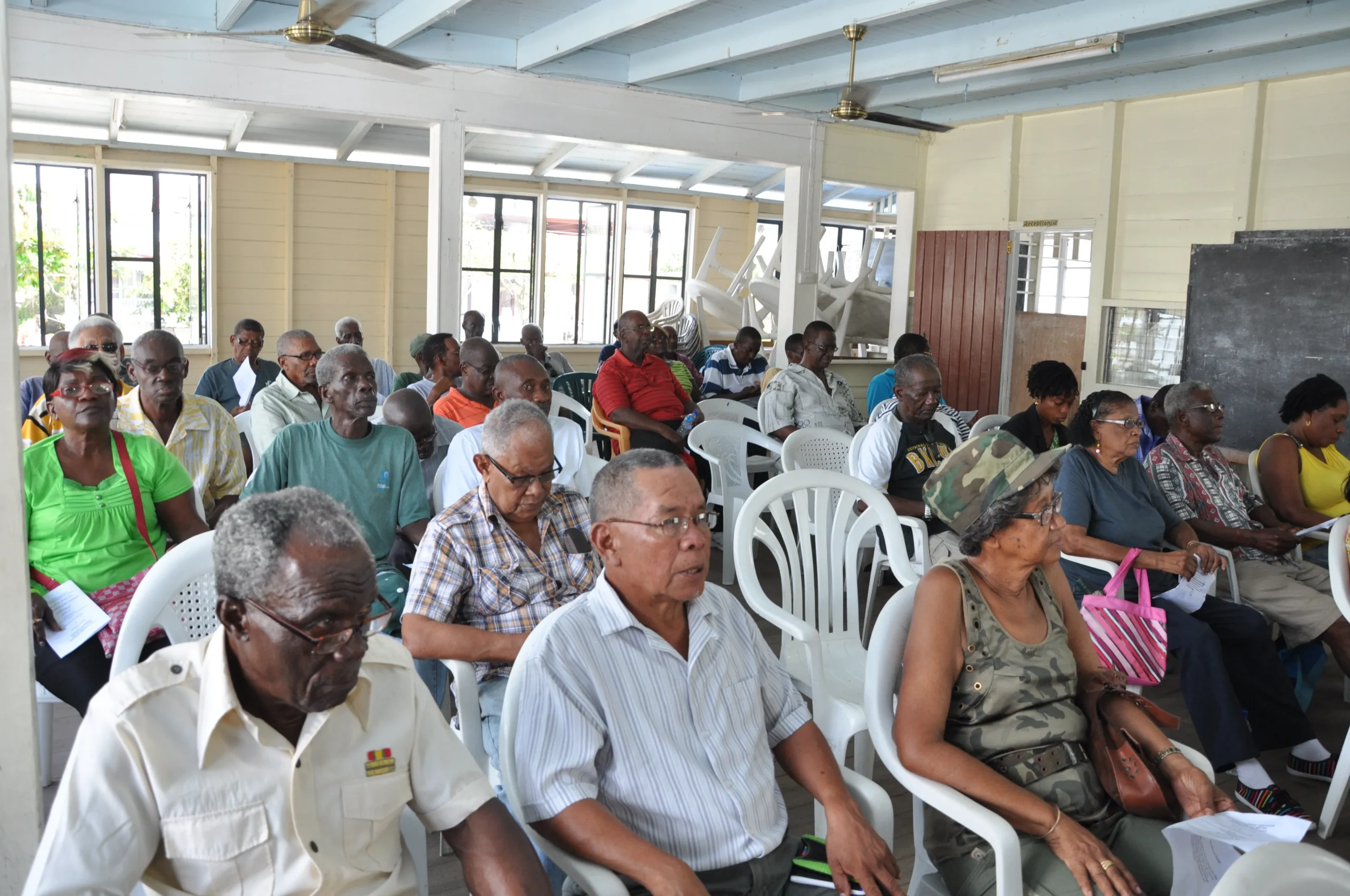Introduction: A Petro-State Going Green?
On a hot afternoon in Georgetown, the diesel generators hum a little quieter these days. In their place, solar panels glint atop schools and health centers in remote villages, and the groundwork is laid for wind turbines along the Atlantic coast. This is Guyana in 2025, at a crossroads between black gold and green energy. It’s a near paradox: the world’s newest petro-powerhouse pledging to lead on renewables. Skeptics raise eyebrows – can a country pumping 600,000 barrels of oil a day really talk about climate leadership? The Guyanese government is answering with action, investing heavily to ensure the oil bonanza funds an enduring energy transformation.
In February 2025, Prime Minister Mark Phillips announced an ambitious US$791.4 million plan for renewable energy projects over the next three years. That figure turned heads. Spread across solar farms, hydropower revivals, and possible wind installations, it represents a bold gamble: using today’s oil revenues to secure a cleaner, diversified energy tomorrow. “Guyana is positioning itself as a leader in energy transition,” Phillips proclaimed at an energy conference. Lofty words – but are they backed by substance? As we delve into Guyana’s energy diversification push, we’ll find a story of contradiction and vision, challenges and progress, all unfolding in real time.

The 5% Reality Check
First, let’s ground ourselves in reality. At the start of 2025, only about 5% of Guyana’s energy needs were met by renewables. That stark statistic came straight from PM Phillips in response to a press query. It laid bare how overwhelmingly dependent on fossil fuels (diesel and heavy fuel oil) the national grid still is. Blackouts are not a distant memory; they’re a lived experience for many Guyanese. So, when Phillips quickly added that this share will “increase tremendously” in 2025 and beyond, it was both a promise and an acknowledgement of how far there is to go.
What gives the government confidence to foresee a spike in clean energy? For one, major solar projects are underway. Contracts have been signed for utility-scale solar farms in Berbice and Essequibo, the country’s populous coastal regions, and plans are afoot for a 15 MW solar farm in Linden (Region 10). In a country that until recently had no large solar plants, these represent a breakthrough. Additionally, after years of false starts, the landmark Amaila Falls hydropower project is back on the table – with development envisioned between 2025 and 2030. If completed, Amaila Falls could provide 165 MW of stable renewable power, potentially doubling the country’s installed capacity and slashing diesel use.
To put it in perspective, Guyana’s push for renewables is not starting from zero, but from behind. The previous government had made some strides with solar home systems in hinterland communities, but progress stalled amid political upheaval. Now, with oil revenues as a catalyst, the PPP/C administration is sprinting to catch up. They tout the installation of over 30,000 solar home systems since 2020, bringing basic electricity to far-flung villages for the first time. And micro-grids are popping up: 21 solar mini-grids are planned to electrify over 240 public buildings – schools, health posts, ICT hubs – in indigenous and interior regions. This dual approach of big infrastructure and off-grid solutions reveals an astute strategy: leapfrog into renewables where it makes sense, even as you leverage oil to fund the leap.
Gas: Bridging Fuel or Risky Bet?
No discussion of Guyana’s energy future can avoid the elephant in the room – natural gas. ExxonMobil’s offshore operations are producing not just oil, but also associated gas. Rather than flare it (wasting energy and polluting the air), the government seized on gas as a bridge fuel to solve an immediate crisis: unreliable, expensive electricity. Thus was born the flagship Gas-to-Energy (GtE) project at Wales, which will pipe gas onshore to fire a 300 MW power plant. Slated to come online by November 1, 2025, the plant promises to cut Guyana’s electricity cost by 50% – a game-changer for households and businesses.
Environmentalists have mixed feelings. On one hand, gas will dramatically reduce the frequency of blackouts and slash carbon emissions compared to the heavy fuel oil currently burned. Indeed, the government argues that Gas-to-Energy provides the “fiscal space” to invest more in renewables by cutting power costs. On the other hand, skeptics worry Guyana could get locked into a new fossil fuel dependency just as it’s trying to break from the old. The administration counters that the gas plant will run in tandem with ramping up solar, wind, and hydro – not in place of them. “Integrating natural gas, solar, hydro, and wind” is the phrasing they use, painting gas as one component of a diversified mix.
From a pure climate perspective, gas is not “green.” But for a developing country flush with gas reserves, the pragmatism is hard to ignore. Cheaper electricity from gas can replace hundreds of private diesel generators and make electric vehicles viable. It can power new factories and agro-processing facilities that were previously unthinkable due to energy costs. The key will be ensuring gas truly is a bridge – i.e., that its revenues and reliability boost are actively used to build out renewables, not delay them.
Notably, Guyana’s leaders are aware of the tightrope. Prime Minister Phillips has been careful to cast gas as part of the transition, underscoring that it will be harnessed “responsibly and in alignment with global climate goals”. And just days ago, the government signaled openness to offshore wind farms – ordering studies on wind potential on Guyana’s breezy coast and territorial waters. If wind and solar can eventually shoulder most of the load, gas could then be relegated to backup duty, fulfilling its destiny as a true bridge. That’s the vision, at least.

Money Talks: Investing Oil Wealth in Sun and Water
What’s striking about Guyana is how explicitly it is channeling oil money into green projects. Consider that from 2020 to 2024, some GY$7.9 billion (approx. US$38 million) was invested in renewables – a period overlapping with first oil. Now, an order of magnitude larger sum (≈ US$790 million) is committed for 2025-2027. This is not typical of new oil producers, many of whom double down on hydrocarbons. Guyana instead rolled out a refreshed Low Carbon Development Strategy (LCDS) 2030, which explicitly earmarks oil revenues for climate-friendly development. In fact, the country is getting paid to keep its forests intact (through a carbon credits deal with Hess Corporation), and it’s using those funds to empower indigenous communities and renewable projects.
One tangible outcome of these investments: remote Region Nine, deep in the hinterland bordering Brazil, now boasts a 1 MW solar farm in Lethem that generated over 3,000 MWh of clean energy since being commissioned. That saved 5,000 drums of diesel and avoided 2,500 tonnes of CO2 emissions – small numbers globally, but significant in a once diesel-dependent frontier town. It’s a proof of concept that renewables can deliver in Guyana’s unique context of isolated communities.
Then there’s hydropower. Beyond the big Amaila project, smaller hydro plants are in progress, like a 1.5 MW micro-hydro at Kumu (in the Rupununi) and another at Moco Moco. These should come online by end of 2024. Each will electrify nearby villages and avoid hundreds of thousands of liters of diesel use annually. Micro-hydros and mini-grids may not grab headlines like a new oil well, but on the ground they mean 24/7 power for clinics and schools in places that currently go dark at sunset.
Wind has lagged behind (no wind farms exist yet), though plans for at least one wind project near the coast are percolating. And in a creative twist, the government is even exploring ocean energy – such as tidal energy in the Atlantic or river-current turbines – given Guyana’s extensive waterways. While those are more experimental, it shows an openness to innovate.
Still, none of this is cheap. The financing puzzle is complex: Guyana is tapping into a mix of sovereign oil revenues, loans (like a recent World Bank loan for energy expansion), and public-private partnerships. The IDB and other multilateral banks are supporting solar farms and grid upgrades. Importantly, Guyana’s newfound petroleum wealth boosts its creditworthiness, making lenders more confident to fund green projects that might not have been bankable before. In essence, the country is leveraging oil to fuel (literally and figuratively) its transition.
Challenges: Grids, Batteries, and Expertise
It’s not all smooth sailing toward sunshine and breezes. Guyana faces practical hurdles that could slow its green ambitions. The national grid infrastructure is aging and limited mostly to the coastal strip. Renewables like solar and wind are intermittent, raising the need for storage or backup. Grid stability is a concern – integrate too many solar farms without proper planning and you risk outages when clouds pass overhead.
To address this, the energy planners are working on grid modernization: new transmission lines, smarter controls, and potentially large battery storage installations. Some of the gas-to-energy funds are earmarked to extend the grid and build a robust national control center. The goal is to eventually have a single national grid that can balance various energy sources – gas, hydro, solar – and dispatch power efficiently. Right now, Guyana has several isolated mini-grids in interior regions; integrating those will take time and money.
There’s also the human capacity element. Building solar farms and hydro plants is one thing; operating and maintaining them long-term is another. Guyana historically had a small pool of renewable energy engineers. That’s changing via training programs (Exxon and others have sponsored renewables training as part of their local content efforts), but the country still often relies on foreign expertise for high-tech installations. The government has acknowledged this, emphasizing “strategic advancements in…workforce development” as key to the energy transition. It’s a race to train enough technicians who can service a solar inverter or troubleshoot a wind turbine in the savannah.
And then there’s politics and priorities. As oil money pours in, there will always be voices saying “why not use that $800 million to build more highways or raise public servant salaries instead of on fancy solar farms?” The administration, to its credit, has kept a consistent narrative that energy is foundational – both for development and for climate stewardship. President Ali often frames it as a moral responsibility: Guyana, with its climate-vulnerable coastline and pristine rainforest, must set an example of balancing petroleum development with environmental care. It’s a tricky tightrope, though, because any perceived neglect of social needs in favor of green projects could be politically risky. So far, the strategy has been to do both: invest heavily in social programs and funnel significant sums to energy diversification, aided by the sheer scale of oil revenues that makes funding multiple priorities possible.
Early Wins and the Road Ahead
Despite challenges, 2024 delivered some early wins that advocates are celebrating. Besides the Lethem solar farm mentioned earlier, rooftop solar on government buildings has proliferated, cutting electricity bills for public offices. Over 590 solar PV systems were distributed to expand electricity access in hinterland areas – think health outposts that can now refrigerate vaccines with solar power, or primary schools with lights and fans for the first time. The tangible improvement in quality of life from these small projects builds public support for the broader green agenda.
Another win: the introduction of electric ferry boats on the Essequibo River is being piloted. Replacing old diesel vessels, these e-ferries – charged partly by solar at docks – reduce fuel costs and pollution for riverine communities. It’s the kind of appropriate technology that makes the abstract transition very concrete for ordinary folks who breathe cleaner air as a result.
Looking ahead, by 2030 the government envisions renewables providing at least 50% of the power mix, up from 5% now. It’s an aggressive target, but plausibly within reach if Amaila Falls hydro comes through (that alone could push renewables north of 30%) and if the planned solar farms (totaling ~60 MW) and wind projects (~50 MW) are executed. Combined with Gas-to-Energy, which itself isn’t renewable but is cleaner than diesel, Guyana could realistically see a nearly decarbonized power sector by early 2030s.
That has global significance. Guyana is small in emissions (practically net-zero due to its forests), but symbolically, a developing country foregoing coal plants entirely and minimizing gas usage is a strong statement. It provides a model where oil exploitation and climate action are not mutually exclusive if managed with foresight and integrity.
A Leader in the Making?
The International Monetary Fund and others have taken note, surprisingly praising Guyana’s climate initiatives. There’s talk of Georgetown becoming a hub for climate finance in the region, given its unique position. Guyana chairs the Guyana-Brazil-Suriname interconnection discussions that could someday see it exporting renewable power to neighbors (Suriname too is big on hydro potential).
One fascinating development: Guyana’s issuance of forest carbon credits – being the first country to be paid for avoiding deforestation at scale. The $750 million deal with Hess Corp is funding many of these renewable projects and village sustainability efforts. In effect, Guyana is monetizing its environmental stewardship and plowing that money back into more green initiatives – a virtuous cycle if done right. It’s earning a reputation as an innovator in climate finance among developing nations.
All this positions Guyana strangely: an oil producer that could plausibly become carbon-negative, even supplying clean energy to others. It’s easy to get carried away, of course. Plans on paper often outpace reality on ground. But there’s an undeniable momentum and a sense of national purpose around energy transformation. Citizens often mention with pride the solar farms or upcoming hydro, linking it to national progress just as much as new roads or schools.
Conclusion: Betting on Dual Prosperity
Guyana stands at a unique juncture. It has one hand on the pumpjack drawing oil wealth from its deepwater wells, and the other hand raised towards the sun, capturing renewable energy. Can it truly have it both ways – prosperity from petroleum and leadership in sustainability? The government’s bet is yes, and it’s putting its money where its mouth is. Billions of dollars are being steered into ensuring that when the oil runs dry decades from now, Guyana won’t be left in the dark. Instead, the vision is a country lit up by its own inexhaustible sun and rivers, its development decoupled from carbon.
The journey won’t be linear or easy. There will be missteps: a delayed hydro contract here, a cost overrun on a solar project there. Managing the gas project’s environmental footprint and keeping it on schedule (already there were disputes causing uncertainty) is a big test in the near term. But so far, Guyana has defied the usual resource curse script. It has avoided drowning in oil-fueled corruption or inertia, and instead is fast-tracking reforms and projects for the greater good.
From an energy analyst’s perspective, it’s thrilling to watch a nation attempt such a grand experiment in real time. Guyana could very well become the case study in textbooks a generation from now: “How to use an oil boom to jumpstart a green economy.” Success is not guaranteed, but the seriousness with which it’s being pursued is evident. In the grand theater of global energy transition, you wouldn’t expect a small country of 800,000 to play a starring role – yet here is Guyana, punching above its weight and aiming to set an example. If it succeeds, the world will have gained a blueprint. And even if it partially succeeds, Guyanese across the coast and hinterland will gain a brighter, cleaner, more resilient energy future.
In a world often cynically divided between oilmen and environmentalists, Guyana is daring to bridge the divide – drilling in one field while reforesting and solar-plating another. The ultimate legacy of this path won’t be known for years, but one thing is clear now: Guyana’s energy story is no longer just about oil. It’s about a future beyond oil.




